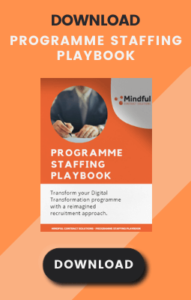“The breadth of accountability of the Transformation Senior Responsible Officer (SRO) is synonymous with that of a CEO.”
Not our words! These words of wisdom come from The Art of Brilliance; a handbook written by SROs for SROs. We may still be some light years away from getting pay parity between Programme Directors and CEOs. However, if you are a Programme Director, we hope you will draw comfort from at least enjoying the autonomy and discretion that CEOs do, in the meantime. All within the remit of your “temporary organisation” i.e. the Major Programme you lead.
But it’s one thing to be addressed as a CEO and another to be one. The purpose of this post is to point you to the ammo you might need to lead your Major Programme as its Chief Exec.
What is a Temporary Organisation?
The term ‘temporary organisation’ is used widely by The Infrastructure and Projects Authority (IPA). ‘Being the leader of a temporary organisation’ is a key concept that is taught in the Major Projects Leadership Academy (MPLA) . This is a course designed by the IPA to transform the implementation of Government policy through world-class delivery of major projects.
Now, if you work as a Programme Director in government, this is a term that you may be familiar with. For those readers who aren’t familiar, a ‘temporary organisation’ is what it literally suggests. The ask of you is to re-imagine leading a major programme, as instead leading a mini-organisation. It is not just in name.
“CEO” is the most powerful and sought-after title in business. Nonetheless, according to research from the Harvard Business review, just three in five newly appointed CEOs live up to performance expectations in their first 18 months on the job. To help you make the step-up, we have identified four actionable steps that will enable you to successfully lead your Major Programme as its Chief Exec.
1) Craft your vision statement
Something common in every great leader is that they have a great vision. But what exactly is a vision? The vision is a compelling picture of the future that aligns stakeholders around the purpose of the transformation. A good vision statement can inspire direction, loyalty and hard work. Nevertheless, many executives don’t understand how to craft a compelling vision for change that will gain widespread commitment within their organisation. The common problem with vision statements is that they are either bland, superficial, too centred on shareholders or lacking a blueprint for action. Some perhaps, are all of these – but surely not yours! Fear not, here are some tips on how you can create a great vision.
- Your vision statement should start with why you do what you do. What is your WHY? Why does your organisation exist?
- “You don’t have to have a vision, but you must find your vision” – the words of visionary thought leader Simon Sinek. Have conversations with key stakeholders to discover their goals and objectives for your organisation.
- Map out your key vision material on just one piece of paper. This is a fun and easy way to get all our ideas down. Pictures are also highly encouraged!
2) Build your programme brand
Step 2 in our CEO’s toolkit explores how you can build your programme brand for suppliers and external talent pools. Your organisational brand is vital as it creates a picture in the minds of prospective suppliers and employees of how it would be to work in your programme. If your organisation has been traditional in the way it works and embarks on a major change, the brand image of the organisation can create barriers in the minds of the prospective supplier and employees.
They may not even believe the picture you try to present in meetings with them. Instead they may imagine your organisation as intransigent, and incapable of accepting positive change. Therefore, there is a need to express your identity as a programme that will have discretion and authority to bring change to the wider organisation. In an ideal world, you would want suppliers and staff signing up “that” view of the organisation. A view that you have crafted for your temporary organisation.
Outstanding contract talent is rarely in the job market looking for a job at a time of your choosing. Week-long recruitment campaigns are therefore largely ineffective. As such, it is important to create awareness in external talent pools 24/7. This should be done through your programme’s website, and if it helps, its social media handle. By always remaining open, you can build up a pool of people with the right skills. But also with a genuine interest in your programme.
3) Establish a great culture
“Being a great place to work is the difference between being a good company and a great company”. In answering the question above, Brian Kristofek, President and CEO, Upshot, certainly thinks so; as do the vast majority of other visionary leaders. The culture of an organisation is of great importance as it “guides activity through shared assumptions and group norms”.
Increased employee motivation, improved team working and higher retention rates are just a few of the benefits that result from a good organisational culture. As the CEO of your ‘temporary organisation’, it is vital that you define your culture to create a platform for building a great team. But how would you go about this? Well, here are some handy tips to help you define your culture.
- Be patient, observant, measured and empathetic, and understand the history and ‘how things are done’ before embarking on change.
- The best performing transformations tend to have open, collaborative learning cultures. Furthermore, there is space for failure leading to highly engaged employees.
- Make sure candidates are a cultural fit. Relationship predictor tools such as Predictive Index (PI) allow you to see in advance how a prospective candidate might get along with some of their key stakeholders. Even if they haven’t met each other during the interview process! It is a tool that we have used within our organisation and it is unbelievably accurate.
At Mindful, our consultants are PI Talent Optimization Certified. We are incorporating the learnings from Predictive Index into the standard service we provide to our customers.
4) Develop your own route to market
Access to on-demand talent is a high value and frequent need for programmes. In spite of this, the bureaucracy of organisational processes only slows down such programmes. Major programmes can NEVER be masters of their destiny. There are too many external stakeholders, too many suppliers and too many end-users with competing priorities. All of this creates risk.
Where you have a choice, you should chart your own course and set up your own dedicated route to the external supply markets. For example, owning your interim staffing through a dedicated partner rather than resigning to your organisation’s resourcing shared service, is a very sensible choice to be made very early in the programme. Find out which route to market is right for you here.
Mindful can help
Now that you have read our CEO’s toolkit, you will be able to successfully lead your Major Programme as its Chief Exec. If you would like to make the transition to CEO easier for yourself, Mindful will take care of steps of 2 – 4 for you.
With in-house commercial expertise, we can guide you through how you can satisfy policies and controls, whilst still choosing the right fit interim resourcing service for your Digital Programme. Contact us on info@mindfulcontract.co.uk.


